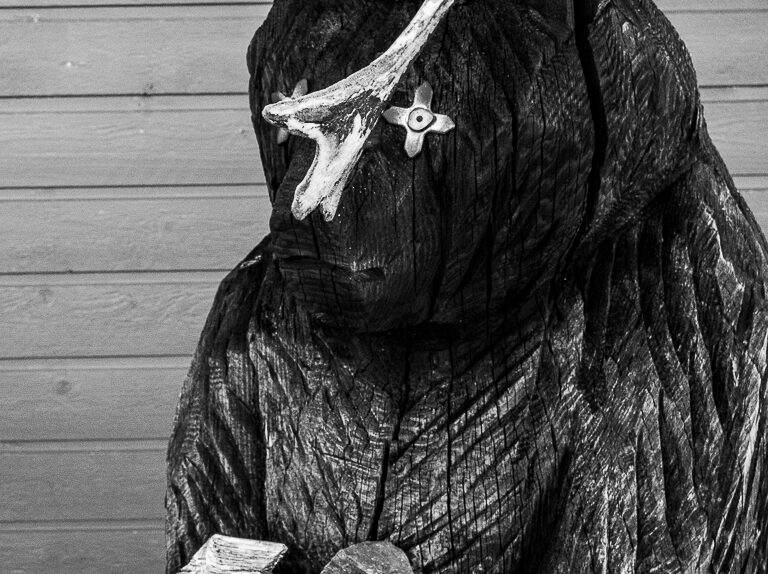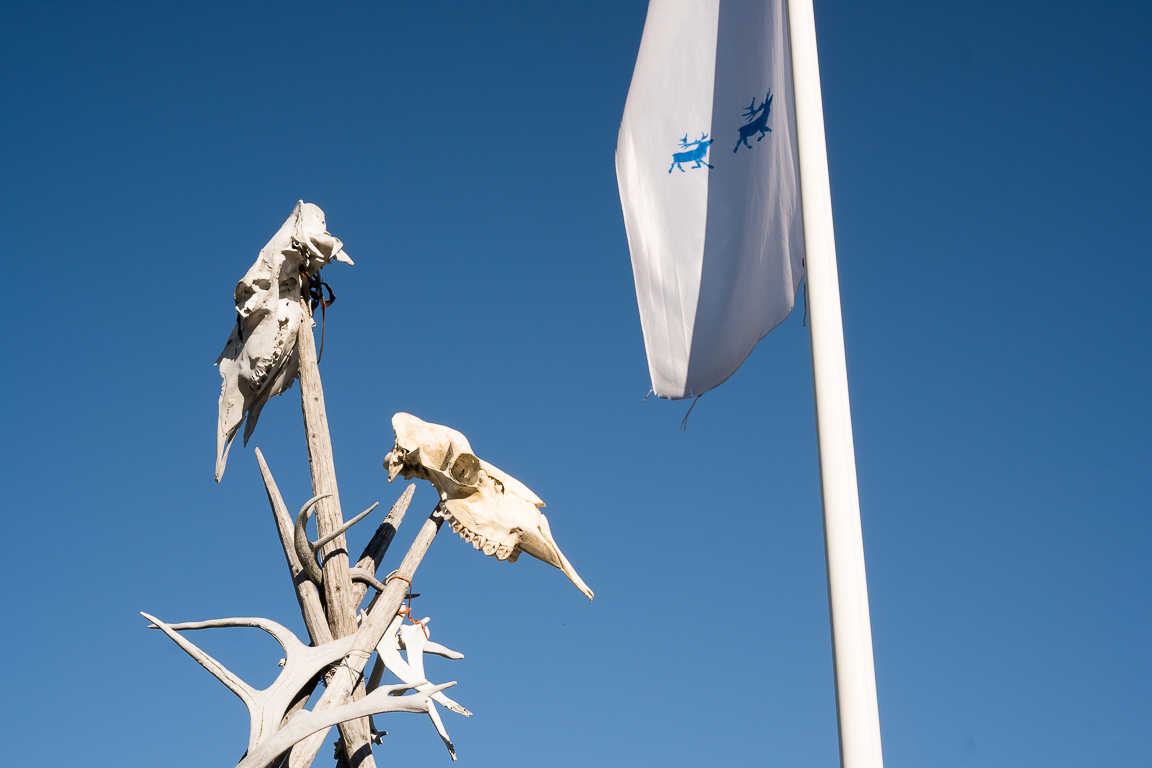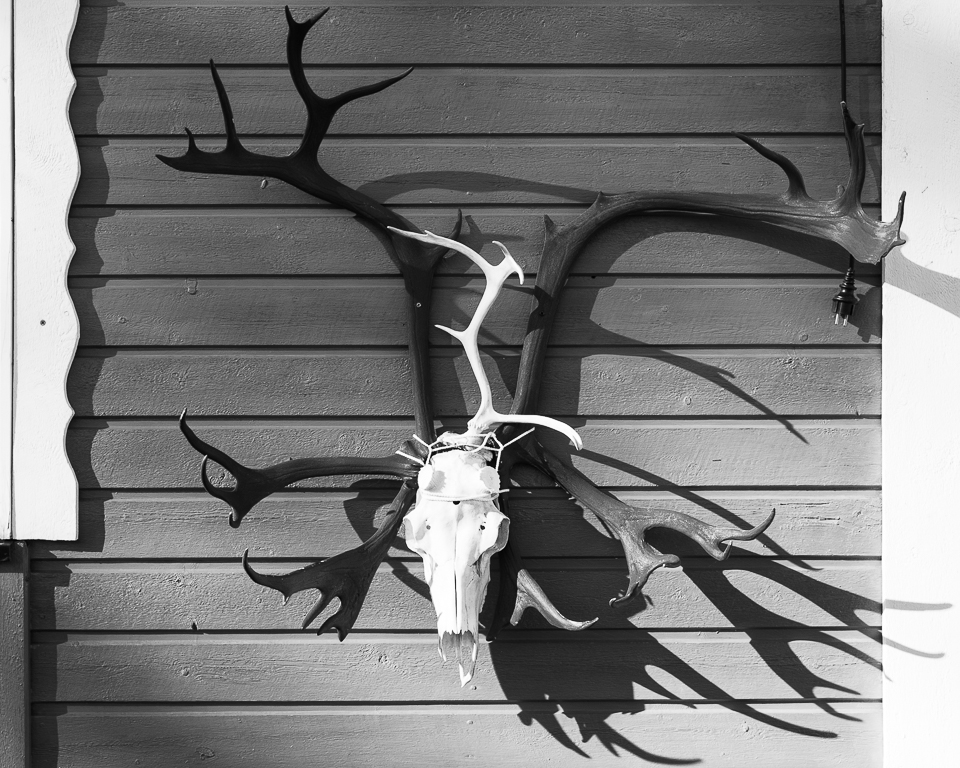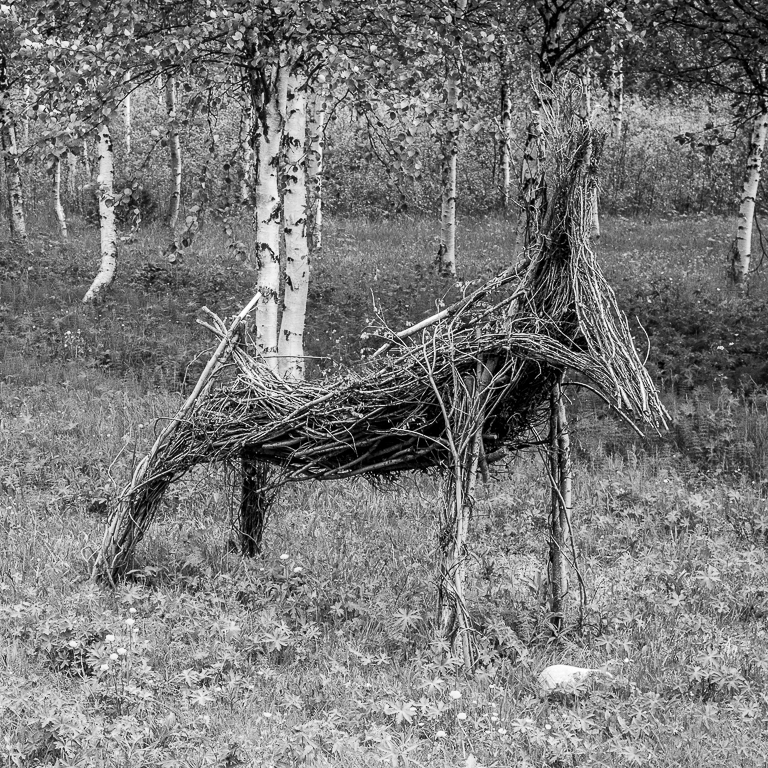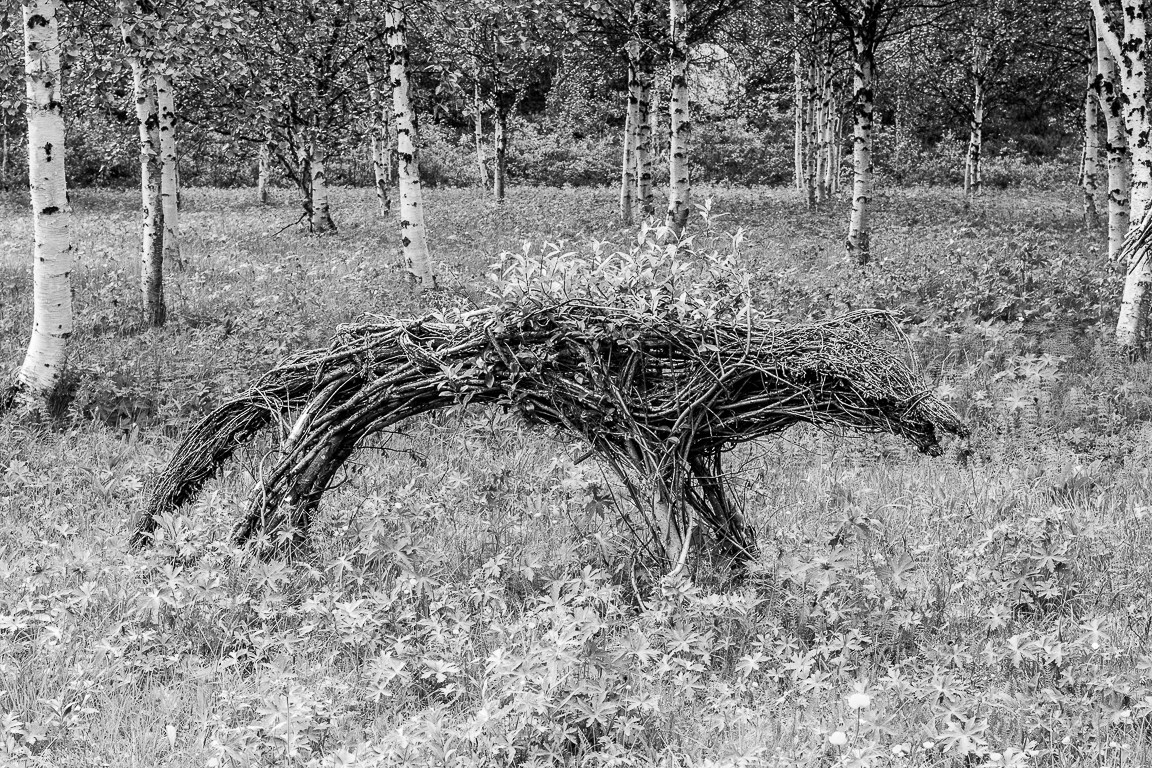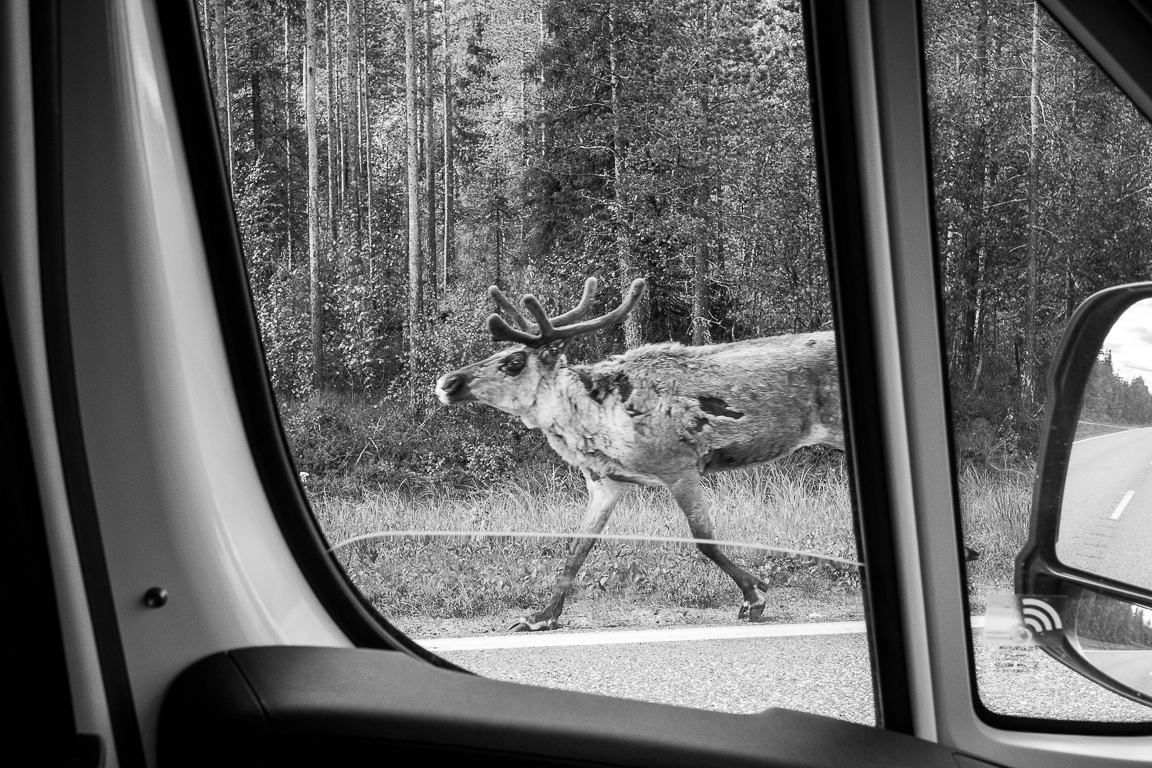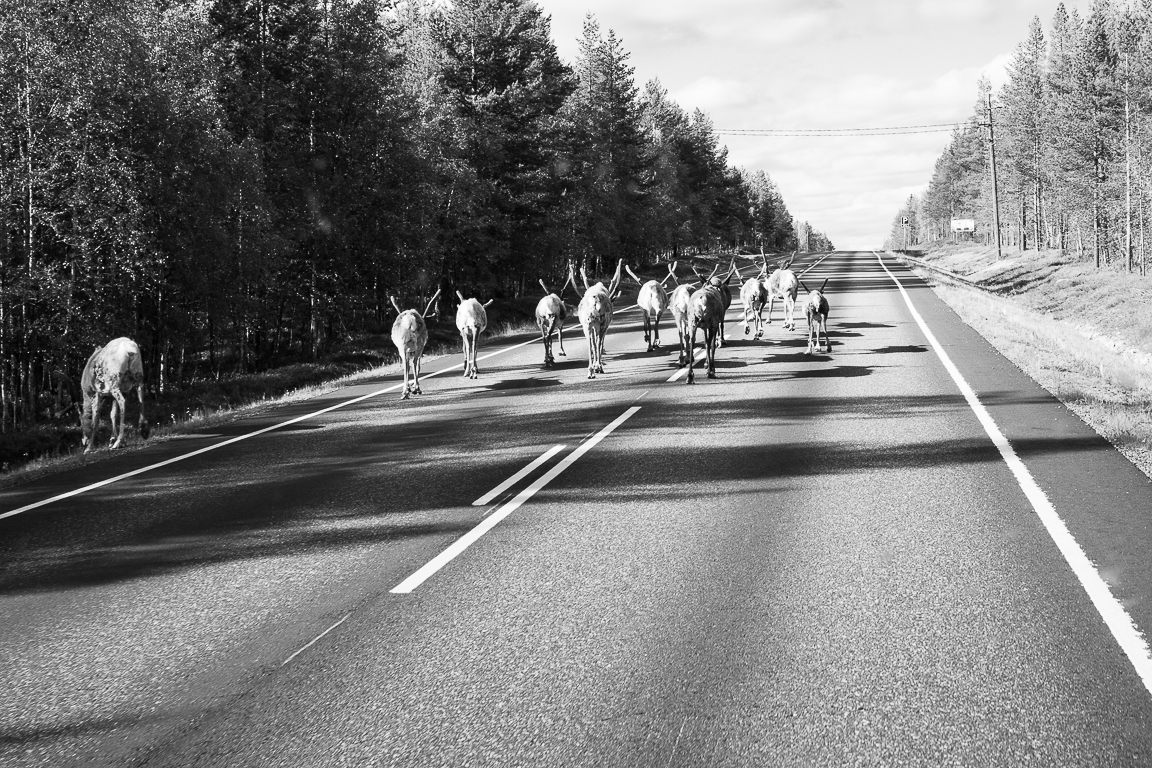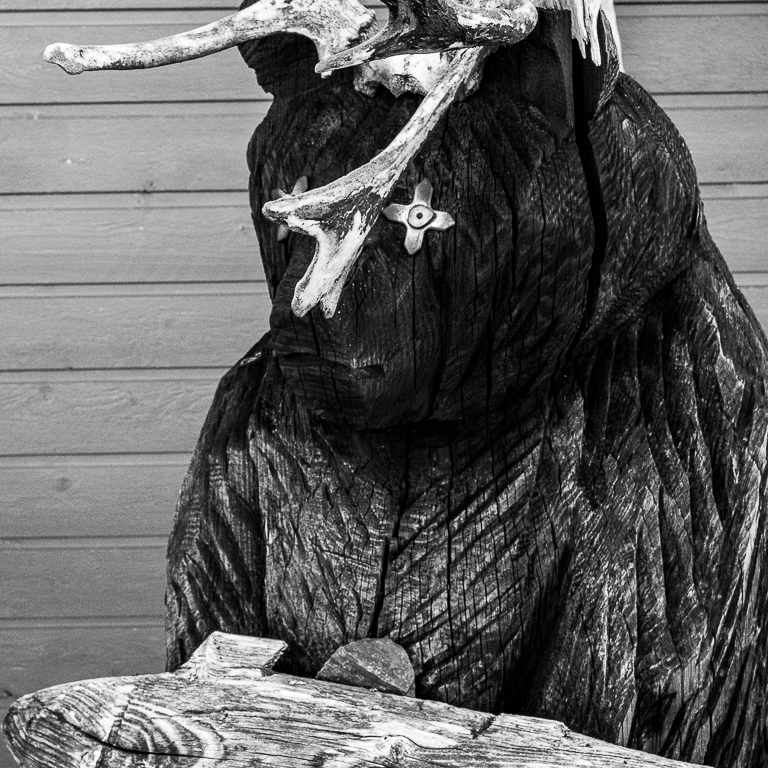June 29, 2018
In Joseph Conrad’s masterpiece (or indeed Apocalypse Now, a film heavily based on it), the protagonist treks for days and days in treacherous conditions towards The Heart of Darkness. He is confronted with increasingly bizarre and disturbing objects, symbols and actions that demonstrate the savagery of the native people.
I’m minded of this I pull into a roadside shop that is selling Sami art. The work is strange and disturbing. Skulls are mounted on poles at the entrance warning visitors to keep away. An angry-looking bear with crosses for eyes grasps a fat salmon in his paws. But as I look more closely, I start to develop a deeper appreciation for the Sami craft and a respect for the use of local, organic materials. I soften and see the animals are to be respected as equals, not feared as enemies. The bear is offering me a share of his hard-won meal, not about to rip my limbs apart.
Feeling uplifted, I get back in the van. The road stretches on and on, further and further up through Finland. I want to get to the most northerly part of the EU, a place in northern Lapland called Utsjoki but my progress is somewhat delayed by some of the locals.
Growing up in the Dales, I’m accustomed to the odd ewe in the middle of the road, oblivious to the long line of cars reaching back to Leeds that its meanderings have caused. In Lapland, the local equivalent is Reindeer. At first, like sheep to a southerner, they are a novelty. One stops to watch the herd as they zigzag across the road, totter up along some dirt track, only to disappear into the dense fir. But soon their hazardous potential becomes apparent. Hurtling along at 100 km/hr, I think of the damage a collision might do to the poor creature, not to mention the vehicle. The 24 hr daylight does offer some mitigation, but judging by the occasional streak of blackened rubber in the hard shoulder, one can never be too careful.
